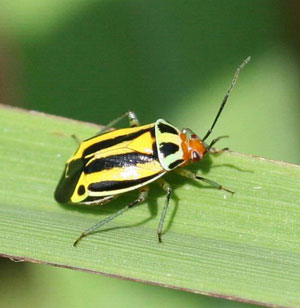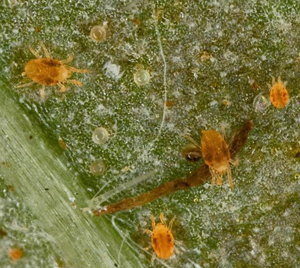Leaf Feeders

David Cappaert, Bugwood.org
European earwigs are flat, red-brown insects that are about 5/8 inch long. They are notable for their cerci -- long pincer-like structures at the tail end of their body. Males have larger cerci that are curved, while females have thinner cerci which are straight. Earwigs are usually found under objects or in natural settings, under bark. They are nocturnal scavengers but will attack some plant species by chewing irregularly shaped holes in the petals and leaves. This injury can look similar to slug damage but will lack the tell-tale shiny slug trails.

Lee Townsend, University of Kentucky
Japanese beetles can feed on about 300 species of plants ranging from roses to poison ivy but basswood is one of their favorites. They usually feed in groups, starting at the top of the tree and working downward, and prefer plants that are exposed to direct sunlight. A single beetle does not eat much; it is group feeding by many beetles that causes severe damage. Adults feed on the upper surface of foliage, chewing out tissue between the veins. This gives the leaf a characteristic skeletonized appearance. For more information, see Entfact 451.
Sap Feeders

Johnny N. Dell, Bugwood.org
Four-lined plant bug adults are between 1/4-1/3 inch long, have an orange head and yellowish body with four black stripes running down the back. The nymphs are red to red-orange with black dots. There is one generation per year, with feeding and growing occurring in May and June. As they feed, four-lined plant bugs create circular brown-black spots. The spots are about 1/16-inch wide and can merge together to create a blotchy appearance that resembles a disease issue. The damaged spots can also dry and fall out of the surrounding healthy tissue, leaving a hole behind.

David Cappaert, Bugwood.org
Twospotted spider mites are tiny (1/50 inch) arthropods with a dark spot on each side of the oval, light green to yellow body. They live on the underside of leaves and use needle-like mouthparts to remove the contents of individual cells. This produces tiny white to yellow spots on leaves, sometimes called flecking or bronzing. These mites produce fine silk-like webbing that often covers infested plants. Infestations are usually most serious during hot, dry periods.